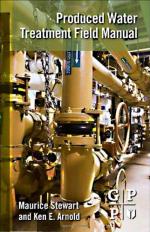|
This section contains 1,214 words (approx. 5 pages at 300 words per page) |

|
Sewage is wastewater discharged from a home, business, or industry. Sewage is treated to remove or alter contaminants in order to minimize the impact of discharging wastewater into the environment. The operations and processes used in sewage treatment consist of physicochemical and biological systems.
The concerns of those involved in designing sewage treatment systems have changed over the years. Originally, the biochemical oxygen demand (BOD) and total suspended solids (TSS) received most of the attention. This was primarily because excessive BOD and TSS levels could cause severe and readily apparent problems, such as oxygen deficits that led to odors and fish kills, and sludge deposits that suffocated benthic organisms. By removing BOD and TSS, other contaminants were also removed and other benefits were realized; so even today, some discharge permits contain only limits for BOD and TSS. However, many permits now contain limits on other contaminants...
|
This section contains 1,214 words (approx. 5 pages at 300 words per page) |

|


